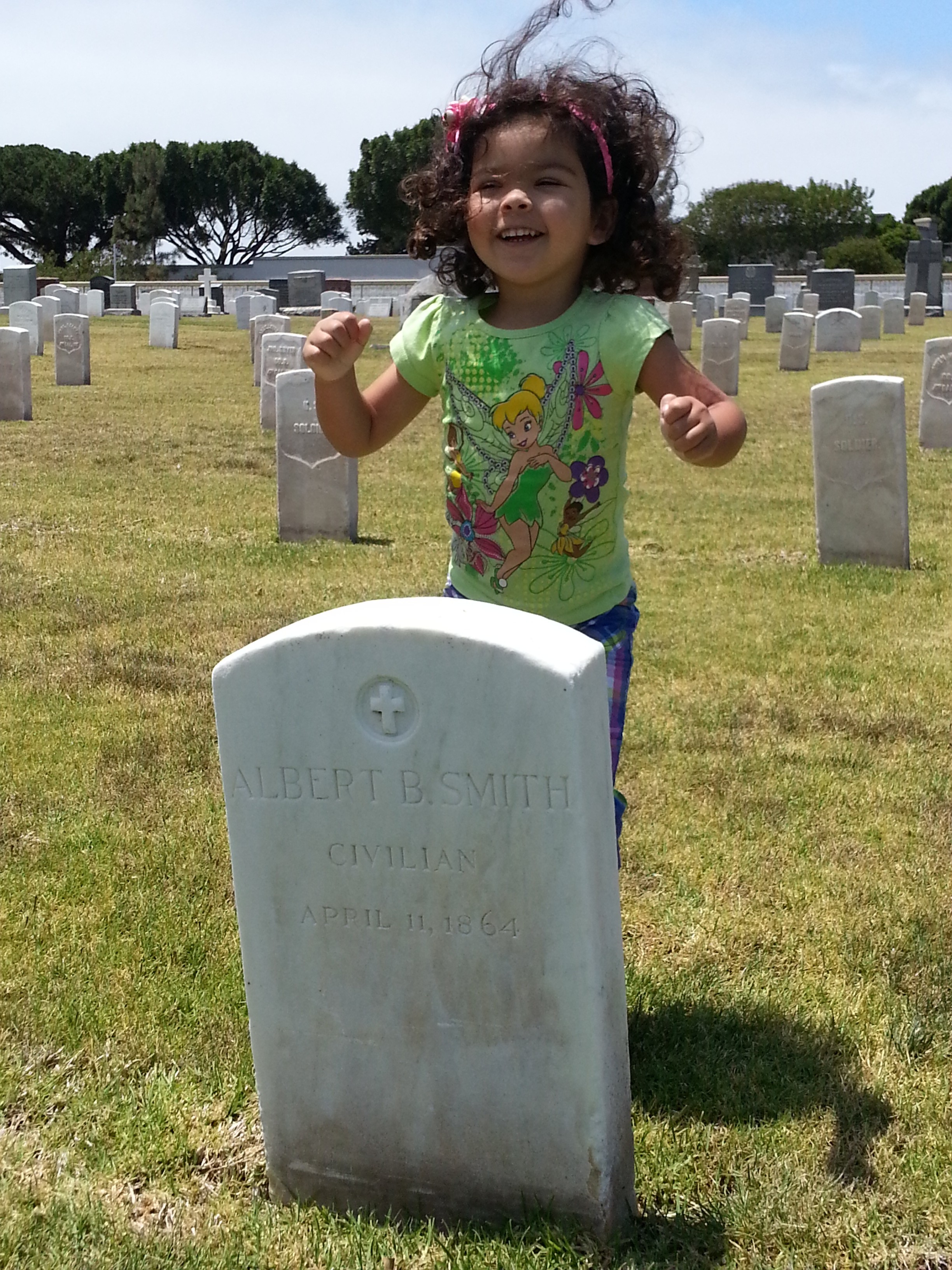SMITH-ALBERT
ALBERT BENJAMIN SMITH

SAILMAKER

Excerpts from article published on 5/22/2015 in San Diego Union-Tribune in series on “Veterans Who Made A Difference To Their Country”:
RAISING THE PRESIDIO'S FLAG
Albert Benjamin Smith was a cheeky sort by most accounts, defiantly waving his hat at enemy gunners from the top of a flagpole in San Diego where he had affixed the American colors. Such boldness at the start of the Mexican-American War in 1846 became the stuff of legend in San Diego and a story that succeeding generations of the Smith family have passed down with pride. "He was a pretty adventurous man," said Linda Jacobo, the great-great-granddaughter of Smith who is well-versed in the family's history. Smith's inspirational act was the second raising of an American flag in San Diego, then controlled by Mexico. In 1846, U.S. sailors and Marines made their way into San Diego Bay and went ashore to take the town. Mexican authorities declined to lower their flag, prompting U.S. forces to make the change which occurred without any shooting. After a short and reportedly friendly stay the American military departed to carry out a similar mission in Los Angeles. Then Californio forces returned to San Diego in the fall and soon the Mexican flag could be spotted flying again in what is now known as Old Town.
Aboard the whaling ship STONINGTON in San Diego Bay was sailmaker Albert Smith, a young New Yorker who said he would lend a hand. The Americans were worried that cannons at the Presidio (where the Junipero Serra Museum now stands along Interstate 8) would be shifted and used against the ship which was unable to move because of a rudder problem. "Albert volunteered to go ashore and spike the guns," said Jacobo, who learned many details of her forebear's actions by reading material available at the San Diego History Center and elsewhere. Smith rammed files or other items into the cannons' touch holes, the openings where the charge was ignited and rendered the artillery useless. The sailmaker had more to accomplish. "Under fire from the Mexicans, he climbed the flagpole and took down the Mexican flag and with nails and hammer nailed the American flag back up," Jacobo said. Smith was not injured and he topped off his derring-do with the doff of his hat.
While some have questioned the Smith tale and an oral tradition that preserved it in the early years, historian Charles Hughes said he has found it to be accurate. Hughes, an Oceanside resident who was born in Old Town, said among the things he has done to reach his conclusion is compare the story with his research into the captain's log of the STONINGTON and other documents. "He had to shinny up and nail it to the flagpole," he said. "And he was doing that while the Californios in the surrounding area were shooting at him." He said Smith was a member of the California Battalion, a militia that worked with U.S. forces during the Mexican-American War. More American military eventually returned to San Diego and cemented the U.S. hold on the community. Richard Crawford, a San Diego historian and supervisor of the San Diego Public Library's special collections, said the Smith story is also noteworthy because it reveals the nature of San Diego at the time. Californios and Americans had business ties and had married one another. In general, the Californios were able to detect the American ascendancy, he said. "They saw the way things were going." Smith went on to play an important role in the development of San Diego, Jacobo said. She is secretary of Descendants of Early San Diego, a nonprofit organization with about 400 people on its mailing list, all interested in preserving and promoting the cultural heritage established by the community's settlers. "He was quite involved in civic activities. He served on the San Diego grand jury, he was a county assessor, he was a superintendent of schools for several years," Jacobo said. He also served as a judge of the plains, a court official who decided disputes about livestock ownership and branding.
Did the pioneer tales get mentioned at family gatherings? "Oh my gosh, yes," Jacobo said. "I heard these stories over and over and over again." Succeeding Smith generations continued to live in Old Town, although Jacobo now calls Clairemont home. "There were a lot of children and a lot of cousins and they all lived close together, so my mom used to tell stories all the time about growing up in Old Town," she remembered. Those accounts are examples of the cross-cultural influences that have helped define San Diego. Perhaps one of the best is what started the family line. In 1850 Albert Smith married Maria Guadalupe Machado, a member of a prominent San Diego family — and whose sister had taken down the American flag that Smith then scrambled up the pole to replace.
NOTE: After Albert Smith died in 1864 he was buried in a cemetery in the Old Town section of San Diego. Historical records reflect he was moved several times and finally reburied during the 1920s at Fort Rosecrans National Cemetery in San Diego. The picture is of his great-great-great-great granddaughter visiting his grave there in 2013.
Submitted by CDR Roy A. Mosteller, USNR (Ret)

